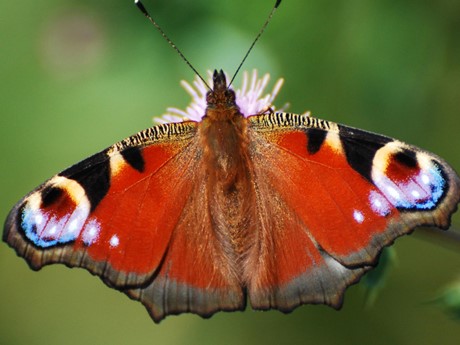Is 2025 a mast year?
Fritha West, 02/10/2025
Have you noticed a bumper crop of acorns this year? You’re not alone – it seems that across the UK, oak trees are producing acorns in mast year like numbers. But does that mean it is a mast year?
What is a mast year?
Every species of tree and shrub has a distinctive way of reproducing. Autumn is the prime time to see this and can help us recognise different species too. Acorns, conkers, winged seeds and an array of fruits, berries and cones make autumn’s colourful leaf displays even more enjoyable.
Every few years, some species of trees and shrubs produce a bumper crop of their fruits or nuts. The collective term for these fruits and nuts is 'mast', so we call this a mast year.
Two of our most recognisable trees, oak and beech, fluctuate massively year on year in the amount of acorns and beech nuts they produce. Some years seem to have very little while in others, the nuts create a thick carpet beneath the trees.
Why do trees produce bumper crops?
One of the main theories for this behaviour is ‘predator satiation’. Take oak and beech as an example again. Animals like squirrels, jays, mice and badgers feed on the acorns and beech nuts. When the trees produce smaller crops for a few consecutive years, they are in effect keeping the populations of these animals in check. But during a mast year, the trees produce more food than the animals can possibly eat.
This abundance causes a boom in populations of small mammals like mice. More importantly, it guarantees some will be left over to survive and grow into new trees. Mast years have a major evolutionary advantage for the tree. Producing nuts is costly work and slightly stunts the tree’s growth, but as it tends to happen every approximately every 5 years, it’s worth the payoff for some of the crop to germinate into new saplings.
Is this year a mast year?
Our last mast year was 2022. Mast years normally happen every 3 to 5 years, and the crop following a mast year is always unusually low, as we saw in 2024. Low acorn years can have worrying results for wildlife, but they serve an important purpose!
This year, the hot weather gave us a longer (but drier) growing season. Warm spring temperatures often result in impressive acorn crops – and as we know, spring is getting warmer and earlier every year. This might result in more acorns each year, which throws off the natural mast year cycle.
This year might be another mast year – but it is too early to tell. Let us know what is happening to oak, beech and horse chestnut trees near you, so we can compare it with previous years and track the impact of climate change on our trees!


